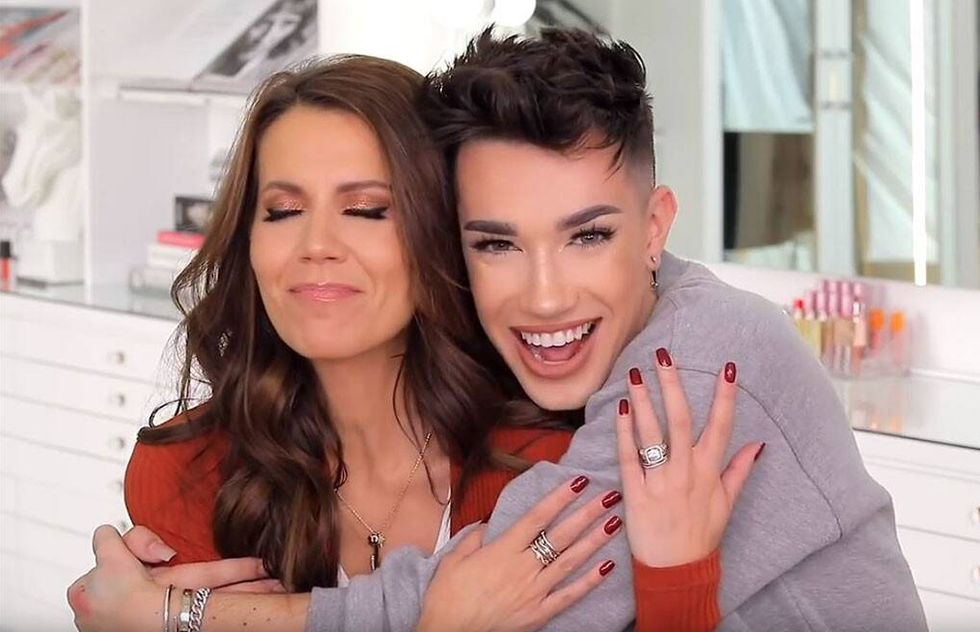-
Influencers reinvented marketing into culture-shaping power.
-
Defining campaigns, icons & scandals reshaped industries.
-
Authentic voices built billion-dollar brands & global reach.
-
Influence proved stronger than traditional media & ads.
10 Biggest Moments in Influencer History
Key Talking Points
.png)
Influencers haven’t just transformed marketing- they reinvented it entirely, emerging as cultural powerhouses that traditional media couldn’t touch. From humble beginnings in hobby blogging and YouTube tutorials to billion‑dollar businesses and massive public influence, these creators carved out new real estate in the attention economy.
This list highlights ten defining moments when one person, one campaign, or one scandal reshaped industries, launched global brands, or sparked debates about fame, ethics, and authenticity.
Coca‑Cola’s Holiday Santa Branding
In 1931, Coca‑Cola commissioned Haddon Sundblom to illustrate Santa Claus as a warm, jolly figure drinking a Coke. This version of Santa became a holiday cultural icon and reinforced Coke’s presence at Christmas for generations.
The campaign used emotional storytelling to create tradition, forging a deep bond between product and ritual. It demonstrated the power of visual identity, emotional association, and recurring motif in branding. Even today, holiday marketers and influencers echo that strategy with signature aesthetics and annual campaigns.
The campaign proved consistent branded imagery can become part of cultural memory. It reminds influencers the visual language they build can outlast a single post or season.
Michael Jordan & The Air Jordan Launch (1984–85)
Nike signed rookie Michael Jordan to an unprecedented athlete endorsement deal in 1984, then released Air Jordan in 1985. The shoe generated $126 million in first-year sales, partly stoked by hype around the NBA “banning” the colorway. Jordan wasn’t just a spokesperson- he shaped the narrative. His brand became Nike’s brand.
Air Jordan became a status symbol, played across courts and into hip-hop and streetwear culture. The campaign showed athletic icons could redefine product categories and consumer identity. It paved the way for countless athlete-brand partnerships driven by personality, not just performance. Today’s influencer-athlete crossover owes its blueprint to this iconic launch.
YouTube Creators Go Global: Michelle Phan & PewDiePie
Michelle Phan began publishing beauty tutorials in 2007, eventually partnering with Lancôme and co-founding Ipsy, a large-scale beauty subscription service. PewDiePie started with gaming commentary in 2009 and grew to become the most-subscribed individual creator with tens of millions of followers. Both showed digital-first personalities could build empires far beyond YouTube.
They pioneered content monetization, brand deals, and fandom-driven media. YouTube’s explosion gave rise to creator-led media companies that rivaled traditional entertainment channels.
Their success laid the groundwork for millions of micro-creators today to monetize authentic content and build communities. Phan and PewDiePie proved that personal storytelling (on camera) can transform into lasting cultural influence.
Old Spice’s “The Man Your Man Could Smell Like”
Isaiah Mustafa debuted in a towel, a horse, and a monologue that instantly became meme gold. By mid‑2010, the spot had over 40 million YouTube views and boosted Old Spice sales by more than 100%. What made it historic? The brand produced 186 personalized response videos to celebrities and fans (including President Obama) blurring the lines between influencer, performer, and brand ambassador.
Mustafa’s humor, charisma, and direct engagement turned product marketing into viral entertainment, proving a human voice sells more than traditional ads ever did. The campaign redefined what brand-influencer synergy could look like: edgy, responsive, and unapologetically personal. It kicked off the modern viral ad era, showing how comedy and direct audience interaction could spark global momentum. Old Spice repositioned itself as current and cool overnight and became a case study in interactive influence. Isaiah’s charisma made him a real person- not just a face- making the world want to be the man their man could smell like.
Kim Kardashian’s 2013 Met Gala Moment
When Kim Kardashian walked into the 2013 Met Gala, fashion insiders scoffed but her Instagram posts shattered the room’s pulse. Within hours, her engagement numbers soared, media coverage spiked, and the event became social content gold. Her presence proved influencers could amplify cultural moments in real-time and become events themselves.
Fashion institutions realized Instagram reach could rival print prestige. The Met Gala began staging influencer inclusivity, red-carpet visibility, and social cues for posts over press clippings. Kardashian’s gala era marked the turning point where social media presence became central to cultural relevance. Influence didn’t just attend the event- it made the event.
Credit: Photo by David Fisher/Shutterstock (2320863oe)
Emily Weiss Builds a Beauty Empire (2014–2019)
Emily launched Into the Gloss in 2010 as a beauty review blog. By 2014, that community became the foundation of Glossier, her direct‑to‑consumer skincare and makeup brand. Instead of typical celebrity endorsements, Glossier was built from its own fans- readers who helped shape products via comment feedback and surveys. By the time she raised her first funding round, Glossier was valued at over $1.2 billion.
Weiss proved a beauty influencer could become a founder, building brand loyalty before the product existed. Glossier’s soft-pink aesthetic, peer reviews, and minimalist packaging resonated with millennials wanting trust over polish. Her success showed that influencer authenticity can scale into institutional credibility and venture capital. Weiss flipped the influencer playbook: content first, product second- turning blog readers into brand buyers.
Chiara Ferragni Lands a Vogue Cover (2015)
Chiara started as a Milan-based fashion blogger with The Blonde Salad, posting runway snaps and personal style. By 2015, she was the first influencer ever to grace a Vogue España cover. This landmark moment signaled that influencers were no longer just hobbyists- they were media-worthy icons shaping fashion’s narrative. With over 10 million Instagram followers, she launched a global footwear line and collaborated with luxury designers.
Harvard Business School later studied Ferragni as an example of influencer entrepreneurship, showcasing how social media influence can become scalable commerce. Her evolution demonstrated that a creator could become a brand, transforming content into couture. Chiara showed that authenticity, audience trust, and personal style could become millions of dollars in equity. She turned influencer marketing into a luxury category and proved creators could belong in the same league as traditional fashion icons.
From Celebrity to Creator Strategy (Mid‑2010s Onward)
Early influencer marketing leaned on celebrity sponsorships: movie stars, athletes, big names. But as trust waned, brands shifted to creators with authentic relatability. This strategic pivot placed more emphasis on engagement and niche voice than celebrity-level reach. Creators who knew their communities: parenting bloggers, local chefs, niche gamers, became essential campaign voices.
Platforms like Instagram and TikTok layered on micro-targeted precision, making performance measurable and scalable. Brands now steward campaigns across mega, micro, and nano influencers, orchestrating storytelling across social tiers. This system rewarded stability, consistency, and trustworthiness over flash-in-the-pan fame. Influence evolved into a layered ecosystem- celebs at the top, creators at every scale feeding the funnel. The modern economy runs on influence that is loyal, prolific, and traceable across every audience segment.
“Sistergeddon”: Tati Westbrook vs. James Charles
When Tati Westbrook released “BYE SISTER,” accusing James Charles of betrayal, digital fallout exploded. James lost around 3 million YouTube subscribers in days, while Tati gained millions overnight. This public feud revealed how influencers can turn personal conflict into national headlines. Brands scrambled. Sponsors pulled. Audience allegiances shifted instantly.
The incident became a case study in parasocial influence, trust fragility, and the power creators have over public perception. It taught marketers that audience sentiment can pivot on a single message or betrayal narrative. In the creator economy, reputation is currency and one controversial video can crash or skyrocket brand value. “Sistergeddon” reminded the world: influencer relationships are powerful, volatile, and highly visible.
The Rise of Micro-Influencers
As brands looked beyond follower counts, creators with 10K–100K followers emerged as secret weapons. Their niche audiences delivered stronger engagement and higher trust- often outperforming celebrities on ROI.
Glossier led the charge by building a 500+ micro-influencer army of real users posting authentic skincare routines. Travel app, Airalo, saw massive success working with just 10 TikTok creators, generating 2.1M views and a low $0.23 CPI. Daniel Wellington and Forever 21 also thrived by partnering with everyday fashion influencers whose audiences reflected real-world style, not runway polish.
Even legacy players caught on. Coca-Cola enlisted micro-creators in Belgium to localize global campaigns with content that felt personal. These moments proved influence isn’t just about scale- it’s about connection, and micro-influencers became the heartbeat of that shift.
Influence Isn’t a Trend- It’s Culture
These ten moments span centuries and platforms, yet they all point to the same timeless truth: when trust is personal, stories are authentic, and personalities genuinely resonate with audiences, real influence takes hold. Whether it was a royal setting fashion trends in the 18th century or a YouTuber launching a billion-dollar beauty brand in the 21st, each example reflects how powerful storytelling and authentic connections can reshape entire industries.
In a world saturated with ads and automation, the most impactful brand moments still come from people with voices we trust, creators we follow, and figures who reflect our aspirations. When brands need talent, they use influencers. These weren’t just viral campaigns or publicity wins; they were cultural shifts that redefined how marketing is done. From athlete-driven apparel empires to TikTok-driven product shortages, these moments didn’t just sell a product- they changed the rules of the game. This is the blueprint for how influence becomes legacy.

The Largest Creator Agency in the World
Elevate your brand’s influence with award-winning, always-on marketing services.







.png?width=300&height=300&name=Black%20and%20Grey%20Bordered%20Travel%20Influencer%20YouTube%20Thumbnail%20Set%20(1).png)
